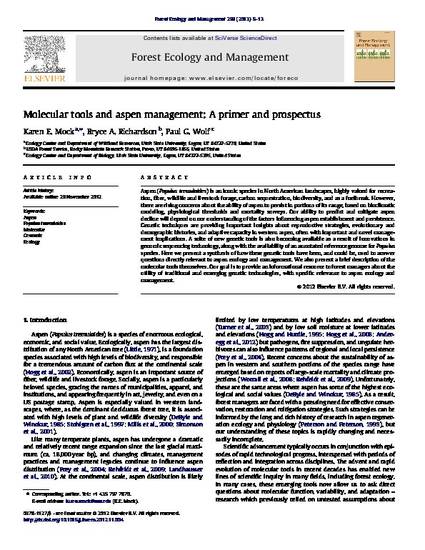
Article
Molecular tools and aspen management: A primer and prospectus
Forest Ecology and Management
(2013)
Abstract
Aspen (Populus tremuloides) is an iconic species in North American landscapes, highly valued for recreation, fiber, wildlife and livestock forage, carbon sequestration, biodiversity, and as a fuelbreak. However, there are rising concerns about the ability of aspen to persist in portions of its range, based on bioclimatic modeling, physiological thresholds and mortality surveys. Our ability to predict and mitigate aspen decline will depend on our understanding of the factors influencing aspen establishment and persistence. Genetic techniques are providing important insights about reproductive strategies, evolutionary and demographic histories, and adaptive capacity in western aspen, often with important and novel management implications. A suite of new genetic tools is also becoming available as a result of innovations in genomic sequencing technology, along with the availability of an annotated reference genome for Populus species. Here we present a synthesis of how these genetic tools have been, and could be, used to answer questions directly relevant to aspen ecology and management. We also present a brief description of the molecular tools themselves. Our goal is to provide an informational resource to forest managers about the utility of traditional and emerging genetic technologies, with specific relevance to aspen ecology and management. (C) 2012 Elsevier B.V. All rights reserved.
Keywords
- Author Keywords:Aspen; Populus tremuloides; Molecular; Genomic; Ecology
Disciplines
Publication Date
2013
DOI
https://doi.org/10.1016/j.foreco.2012.11.004
Publisher Statement
USDA Forest Service Publication
Citation Information
Karen E. Mock. "Molecular tools and aspen management: A primer and prospectus" Forest Ecology and Management Vol. 299 Iss. SI (2013) p. 6 - 13 Available at: http://works.bepress.com/karen_mock/67/
